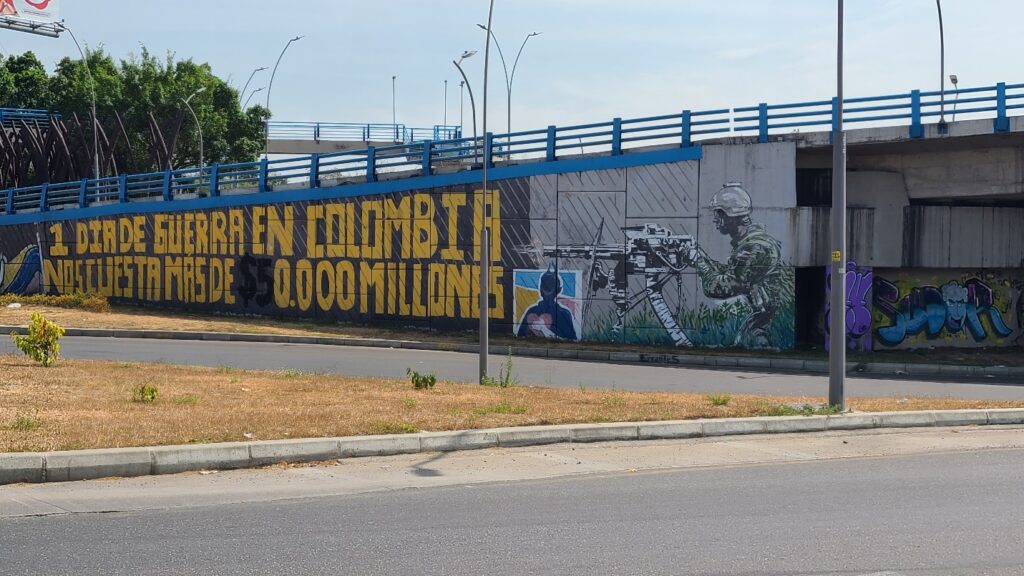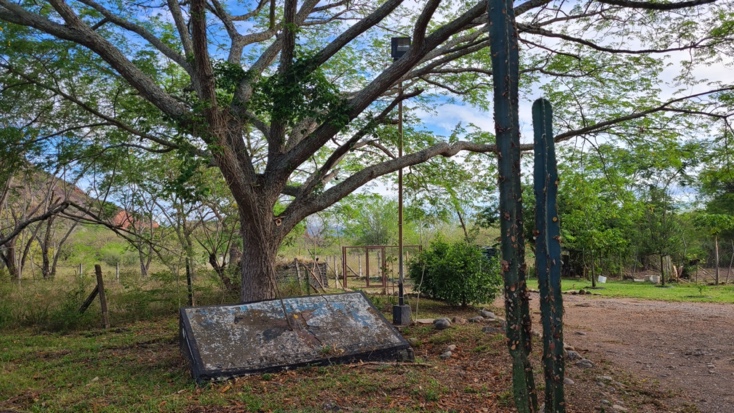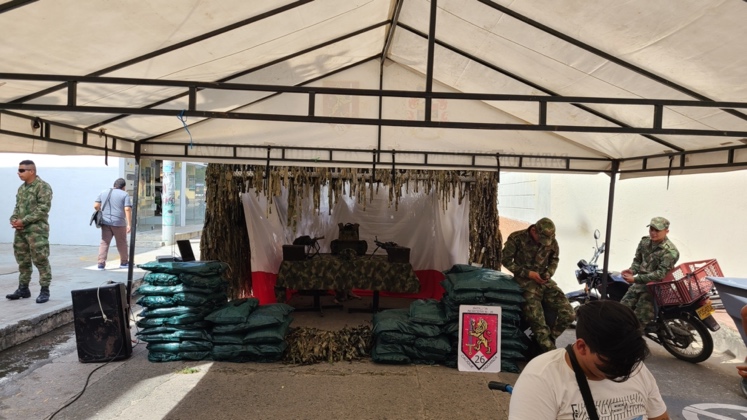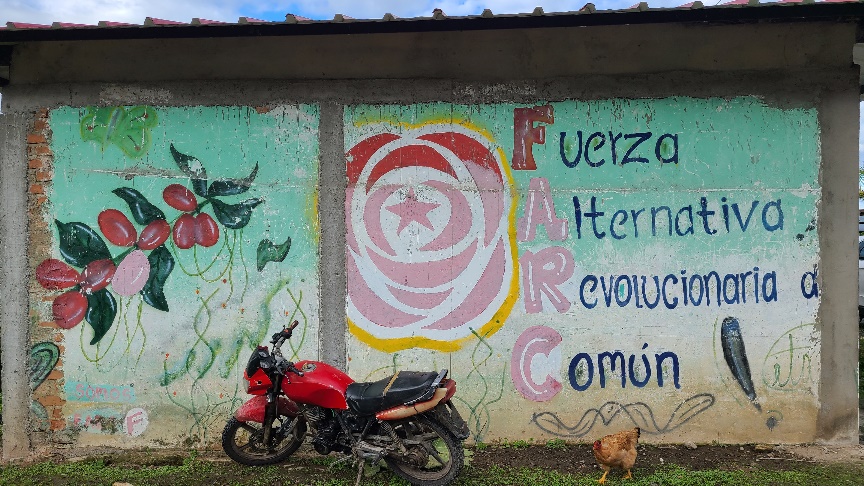Alejandro Garcia 2022 Field Report
Militarized river management in the Upper Magdalena River, Colombia
Abstract
Located between the eastern and central branches of the Colombian Andes, the Upper Magdalena River (UMR) bears witness to a sedimented history of infrastructural projects and development programs that shape the socio-ecological life of the region in contradictory ways. While the Colombian state, in partnership with the US and European capital, has intended counterinsurgency battalions and hydropower dams as modernization vehicles, their primary beneficiaries challenge them on the grounds these projects constitute extensions of enduring colonial relations.
My dissertation research investigates how riverine communities of the UMR understand, experience, and contest the coupled global dynamics of US-backed counterinsurgency efforts and Euro- Spanish hydropower infrastructures. In the wake of a massive Chinese-led hydropower boom in Colombia, with a proposed 15 new dams in the UMR, uplifting the voices of these riverine communities will elucidate how global green energy infrastructures and the military industrial complex refract locally and will provide a window onto broader questions about the militarization of river management in Latin America. In this piece, I focus on information learned from participant observation at four different places along the UMR.
Keywords: Magdalena River, green militarism, counterinsurgency, land-water interfaces

During the first six months of my fieldwork, I have focused on 1) how riverine communities remember the entwined histories of US-backed counterinsurgency and Spanish-owned hydropower infrastructures in the UMR, 2) how counterinsurgency and hydropower infrastructures shape riverine communities’ access, use, and control of the riverine landscapes, and 3) how riverine communities negotiate and contest the damming and militarization of the waterscape.
With the support from CLAG, I have been able to travel along the Huila stretch of the UMR. I have participated in anti-damming social movements’ meetings, talked to riverine peasant and fisherfolk about the coupled dynamics of militarization and hydropower infrastructure, and collaborated with different socio-environmental organizations that dispute river management practices in the UMR. Data collection has consisted of ethnographic notetaking and semi-structured interviews. This experience has allowed me to gain valuable insights into how people contend and negotiate the daily dynamics of militarism and river management in different places along the UMR.

My ethnographic inquiry has unveiled that the dynamics of militarization within the UMR are changing rapidly. In the Betania Dam, built in the 1980, fisherfolk still remember the days when the military patrolled the reservoir cutting fisherfolk’s artisanal fishing lines. My informants report that due to that it was easy for fisherfolk to lose fishing hooks and the catch itself. Days of work and waiting, not to mention valuable resources, were lost. Those were the times when the military became de-facto fishing authorities in the Betania Dam. Those days are gone today. The military no longer patrol the reservoir, they are only stationed by the powerhouse, where the turbines are placed. The Betania Military Base, erstwhile the operational center of militaries in charge of the Betania Dam, seems to have been abandoned.
This doesn’t mean that the military have relinquished their political control of the riverine landscapes. The Special Energy and Highway Battalions No. 12 (BAEEV 12), originally created during the construction of El Quimbo Dam, has expanded its reach to new locations and topics of intervention. Peasant leaders who opposed the construction of El Quimbo Dam in Garzon recall how the construction of this battalion meant for them process of stigmatization and criminalization, and a shift in balance of forces that undermined the peasant resistance and allowed the company building the dam, the military, and the police to take the upper hand in the socio-environmental conflict. Today, the BAEEV 12 provides security services to the oil industry and electric power transmission stations. Its infrastructure is present not only in Garzon, where the central based is placed, but in at least two other places along the UMR, sometimes in the form of substations and some others just as a trench with a sign. My informants also report that the BAEEV 12 has also taken active role in the fight against environmental crimes acting on demand by the Corporación Autónoma del Alto Magdalena (CAM), the region’s formal environmental authority, to apprehend forest loggers.

The counterinsurgent presence in the region takes many shapes and generates different feelings among my informants. I witnessed this myself when attended to an agroecological peasant-farmers’ markets in Garzon – Huila. This was part of a two-day workshop on native seeds and fish organized by members of an anti-damming social movement-cum agrarian entrepreneurs. I was astonished to arrive to the market and find that the opening stand belonged to the Cacique Pigoanza Battalion: there were two machine guns in full display behind a mock trench guarded by two seemingly uninterested soldiers. The discomfort with this stand was clearly visible in some of event organizers while others seemed to barely notice it. During lunch, I raised the issue of the apparently awkward presence of a counter-insurgent stand in an agroecological peasant market and one of the organizers replied to me that there was noting awkward about it: “We are social leaders, we need security. They are here to look after us”. That opinion was not shared by all the organizing members. A woman in her mid-30s explained to me that the presence of the military stand in the event was more of a miniature sample of social tensions in the UMR, where peasant communities push for an agroecological transition amidst counterinsurgency, and surveillance.

These situations sharply differ from how the entanglements between counterinsurgency and hydropower infrastructure take place in Colombian Massif, the mountainous area of the Magdalena river’s headwaters. Previously to the 2016 Peace Accord, the Colombian Massif was an active stage of counterinsurgent operations against Fuerzas Armadas Revolucionarias de Colombia (FARC). After FARC handle down their weapons, it became common to find graffities with the logo of their newly emerged political party, the Fuerzas Alternativas Revolucionarias del Común, on peasant houses’ walls. In my recent visits to this area, I have been able to note that the fear that the high days of armed conflict might come back is ubiquitous. My informants, who oppose the land acquisition for conservation purposes spearheaded by the Spanish company owner of El Quimbo and Betania dams, relate that public institutions in charge of overseeing human rights have been retreating from their territory citing ‘security concerns’. They are unclear about the legitimacy of the security concerns cited but they speak clearly about the effects of this retreat. As one of the leaders opposing the land deals has told me, while the oversight of human rights violations retreats, the military come back to patrol the headwaters of the river, instilling fear, undermining dissensus against land acquisitions, and foreclosing political debate about the conservation policy in the area.
How Funds were Spent
I used CLAG funds to cover airfare to and from San Francisco, California and Bogota, Colombia ($1000), a domestic round ticket from Bogota to Neiva ($100), a Zoom voice recorder for interviews ($215), and a $150 for stationery and printing costs. CLAG’s support has been fundamental to the success of this project. THANK YOU!
Please see the full report for more details.


















